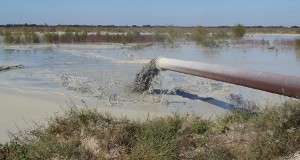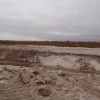
Phosphate rock is a key component in producing fertilizer and many other economically important products. Getting phosphate rock out of the ground produces a by-produce called phosphate clay, which mining operations must return to the landscape. However, phosphate clay retains large amounts of water, making them unsuitable for use as farmland or wildlife habitat. This 6-page fact sheet explains how using a sand-clay mix can more efficiently restore the landscape and put it to beneficial use. Written by Casey Beavers, Edward A. Hanlon, Matt Wilson, James “Bud” Cates, and George J. Hochmuth, and published by the UF Department of Soil and Water Sciences, July 2015.
http://edis.ifas.ufl.edu/ss636
Tag: Matt Wilson
Multiple-Use Landscapes: Reclaimed Phosphate Mined Lands (SL374/SS575)
 Phosphate mining is a temporary land use. The jobs and economic activity associated with mining depart an area once the resource is exhausted — but the landscape created as a result of mining and reclamation will exist in perpetuity. Communities affected by mining activities need to have reclamation result in lands with high potential to provide sustainable economic opportunities while maintaining ecosystem services and ecological functions. This 8-page fact sheet provides a brief overview of the landscapes being created as a result of phosphate mining and reclamation activities in Florida. Written by M. Wilson and E.A. Hanlon, and published by the UF Department of Soil and Water Science, October 2012.
Phosphate mining is a temporary land use. The jobs and economic activity associated with mining depart an area once the resource is exhausted — but the landscape created as a result of mining and reclamation will exist in perpetuity. Communities affected by mining activities need to have reclamation result in lands with high potential to provide sustainable economic opportunities while maintaining ecosystem services and ecological functions. This 8-page fact sheet provides a brief overview of the landscapes being created as a result of phosphate mining and reclamation activities in Florida. Written by M. Wilson and E.A. Hanlon, and published by the UF Department of Soil and Water Science, October 2012.
http://edis.ifas.ufl.edu/ss575
Florida Reclaimed Phosphate Mine Soils: Characteristics, Potential Uses, and Management Considerations (SL370/SS571)
 A critical nutrient for plant growth, phosphate helps sustain the world’s growing population. In 2010, seven mines in Florida produced approximately 10% of the world’s phosphate supply and more than 65% of the phosphate for the United States. But each year in Florida thousands of acres disturbed by strip-mining for phosphate rock must be reclaimed for other productive uses. This 11-page fact sheet provides a general characterization of the various soil types resulting from phosphate mine reclamation. Written by M. Wilson and E.A. Hanlon, and published by the UF Department of Soil and Water Science, October 2012.
A critical nutrient for plant growth, phosphate helps sustain the world’s growing population. In 2010, seven mines in Florida produced approximately 10% of the world’s phosphate supply and more than 65% of the phosphate for the United States. But each year in Florida thousands of acres disturbed by strip-mining for phosphate rock must be reclaimed for other productive uses. This 11-page fact sheet provides a general characterization of the various soil types resulting from phosphate mine reclamation. Written by M. Wilson and E.A. Hanlon, and published by the UF Department of Soil and Water Science, October 2012.
http://edis.ifas.ufl.edu/ss571
Landscape Diversity: Florida Phosphate Mine Pit Lakes (SL364/SS565)
 This 8-page fact sheet contains a synopsis of findings obtained through research, contrasted with limnological studies of natural lakes in central Florida. Written by M. Wilson and E.A. Hanlon, and published by the UF Department of Soil and Water Science, May 2012.
This 8-page fact sheet contains a synopsis of findings obtained through research, contrasted with limnological studies of natural lakes in central Florida. Written by M. Wilson and E.A. Hanlon, and published by the UF Department of Soil and Water Science, May 2012.
http://edis.ifas.ufl.edu/ss565
Landscape Diversity: Multiple-Use Landscapes for Reclaimed Phosphatic Clay Areas (SL229/SS449)
 With planning, communities can use reclaimed phosphatic clay areas for agriculture and at the same time restore lost wetlands, improve water quality and water use efficiency, and retain areas valuable to wildlife. This 5-page concept paper was written by E.A. Hanlon, M. Wilson, C. Beavers, and J. Cates, and published by the UF Department of Soil and Water Science, August 2011.
With planning, communities can use reclaimed phosphatic clay areas for agriculture and at the same time restore lost wetlands, improve water quality and water use efficiency, and retain areas valuable to wildlife. This 5-page concept paper was written by E.A. Hanlon, M. Wilson, C. Beavers, and J. Cates, and published by the UF Department of Soil and Water Science, August 2011.
http://edis.ifas.ufl.edu/ss449